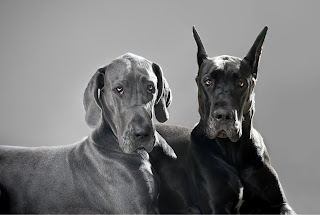Dog blog 13 - nooks
 Nooks
Nooks
The Dog is on his holidays this week. Hooray! And, as a treat after chasing some rabbits, the Dog took himself for a special holiday walk this morning to his favourite local cafe.
Coffee
The Dog decided, since the cafe is Dog friendly, to stop there for a while. And have a tip top coffee; thankfully and mercifully, not burned. (A lot of coffee making places seem to be doing that nowadays with worrying and increasing regularity.) With scrambled eggs, toast, sausages, tomato and - controversially - spinach.
Spinach
Now I like spinach. Either wilted slightly in a pan, or raw. Tail waggingly yummy yum. But, I wasn't altogether convinced by the Spinach's wentingness (a completely and entirely made up Dog word) with the rest of its breakfast companions.
To give you an idea, let's calibrate the lower end of a continuum of convincingness (a real word, dating in print back to at least 1647) of the spinach's wentingness.
That is, the spinach's compatibility with the rest of the aforementioned breakfast. Which makes you wonder why I couldn't just have said that in the first place instead of making up a completely unnecessary definition. Well, that's just what Philosophers do.
Really pretty low
So, back to the continuum. Towards the lower end of its lower end, I've decided to place the Star Wars Ewok spin-off film, Caravan of Courage. Clearly space (see Dog blog 5 - space). But, quite honestly, a dreadful affair.
Pretty, pretty low
Slightly further up the lower end of the continuum appears, surprisingly, Brian May's Star Fleet album experiment with Eddie Van Halen. Now, I'm a massive fan of Brian May (see Dog blog 9 - time travel). And undoubted, fine, guitar playing features. But, to be fair, it's just a "no".
By way of a slight aside, here's Eddie at work, playing Eruption. Many players consider Eddie took the electric guitar along the next stage of its memetic evolutionary journey (see Dog blog 12 - work) from where Jimi Hendrix left off.
Brilliant? Or a din? I'll leave that to you.
Anyway, back to the continuum. If a mid-point were to usefully appear between the Ewoks and Star Fleet, spinach would feature slightly past the mid-point, towards the Star Fleet marker side.
Water tanks
While I was sitting in the cafe pondering the spinach's overall wentingness, I noticed a wooden sculture hanging from the ceiling, in one of the cafe's corners. It rather caught my eye; a gnarled, elongated synapse of a thing.
But then, equally as interesting, if not more, I spotted the cafe's water tank not far from it, on the same wall. The tank looked like it was made of old tin (who knows, I'm not a metallurgist); sheet metal roughly wrought into shape. And you could see where the bashing tools had made their bashings (another made up Dog word) all along it to get the tank just so.
Looking for beauty
All this brought to mind Alain de Botton's very entertaining and recent book, The Pleasures and Sorrows of Work. Alain has been travelling around the place, looking at the various types of work we get up to, and our attitudes to it.
Here's Alain on biscuits.
Logistics
It was a line in Alain's chapter on logisitics that got me to thinking about the cafe's water tank. Alain describes a visit to a bunch of grey warehouses in the centre of England used to distribute all sorts of goods - and wares of course - across the UK. He refers to these buildings as "the logistics hub":
"... Yet it would be foolish to describe the logistics hubs as merely ugly, for it has the horrifying, soulless, immaculate beauty characteristic of many of the workplaces of the modern world. ...".
This theme appears several times in Alain's book: do we deliberately not appreciate the beauty of industrial objects, even when there is clearly something aesthetic to engage with? Something that can be admired. Or thought beautiful even.
I'm sure you've heard stories of visitors to modern art galleries looking at radiators, or piping, or light switches. Thinking them to be exhibits. But find out afterwards it was "just" the radiator, etc - and, I'm sure, feel (or are made to feel) a bit foolish.
But why?
Parking meters
I've just been looking out of my flat's kitchen window, and spotted the parking meter that lives on the other side of my street.
I've walked past that thing every day for the last 6 years or so. So, assuming I walk past it on my way to work and back every day, that's a minimum walking pastness (an entirely made up Dog phrase) of 4380 times. I worked that out on my Dog calculator, with its extra big paw sized buttons. And I didn't count trips to the local corner shop for milk. Or biscuits of course.
That's quite a lot of times. Especially for a Dog. And I've only just really looked at the meter properly today: looked at it to admire it, that is.
So what's with it? Isn't it "just" a parking meter?
Well, it's got small solar panels on the top which, for one thing, transports the imagination to far away places, like Mars - and the Mars Rover still trapped in a martian sand dune and still, bravely, trying to get unstuck. And these panels effortlessly and unassumingly sport 126 years of scientific progress (interestingly, the first working solar cell was made earlier than you might think - in 1883 by Charles Fritts).
And the meter could have been fashioned with a functional straightness, just a plain old grey box. But it wasn't: it has a pleasing, almost feminine curve to it. Almost like you might expect to see on a modern art sculpture of a human body.
Also, there's two buttons, a big green one to get your parking ticket, and red one (presumably if you make a mistake). Which manifests years of assumptions (except for the red-green colourblind) about the sense and reference of red and green, almost hardwired into our brains, as symbols of safety and danger. Of stop and go.
And it has a mysterious identifying mark, "N265" - which makes you wonder what that's about. Does the N signify "North"? Or "New" maybe? Or all they all numbered with a letter of the alphabet and a number from 1 to 999?
Finally, it symbolises something wider, a symbol of a form of justice: it is a silent, gentle, stationary policeman.
Meaning - and beauty
And all that in a parking meter.
That got me to wondering just how many things do we walk past and not think about or appreciate, on our way to chase rabbits in the park? Things that lurk quietly and unprepossessingly in the corners, the nooks, of the industrial world?
Here's to door handles, light switches, parking meters, hubcaps, manhole covers, traffic lights, double yellow lines, television aerials, kerbs, radiators, pipes and drains.
The unsung art of the ordinary, day to day.



Comments
Post a Comment